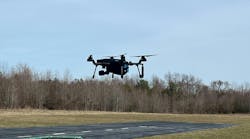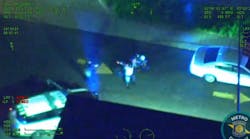Years ago, police sketch composites were done exclusively with a pencil, as a trained artist created an image from a victim's memory in hopes of capturing the likeness of a suspect.
But facial composite software has made it so that any officer in a police department can be trained to recreate a suspect's face from thousands of images just by clicking a mouse.
Local sketch artist Michael Streed developed one of those aps, called SketchCop FACETTE.
Streed, who has been in the industry for more than 30 years, acknowledges that times change and things evolve.
"You have to adapt to changes so you don't become irrelevant," he said.
Streed said he thought about the need for his software when he first began his career as a police sketch artist.
"When I was trained in 1979 and sketched my first suspect in 1980 it was very clear to me that technology was going to have a major effect on how police create composite sketches," he said.
It was about five years ago, around 2007, when law enforcement agencies started looking at how they spend their money, Streed said. That's when the new software became more relevant.
"It doesn't make sense not to embrace the technology," he said.
Sketchcop FACETTE uses sketch facial features as a base to work from and it's designed to look like a police sketch.
"All the pieces are made up already, sketched by an artist in the system -- eyes, nose, chin. All they have to do is interview the eyewitness, have them pick out the specific pieces, and (the detective) puts it all together to make a face."
Streed said he wanted to provide means to produce sketches for departments that didn't have an artist.
"Typical police sketch artists are usually taken from inside the police department," he said. "But the problem with that is they would get varying styles and varying quality. Departments would spend thousands and thousands of dollars to train an officer -- to get them up to speed and get their skills down."
Local agencies, including the Fontana Police Department, use SketchCop FACETTE.
Sgt. Tom Yarrington, who has been with the department for 23 years, said it provides the agency with a higher quality then what they used to get.
"With the old computer programs, it was just the shape of a face or the shape of a head," he said. "Sometimes we caught the guy and it looked just like him. Other times, we caught the guy and it looked nothing like the cartoon we just made."
The software programs can be beneficial, Yarrington said, but you have to use them on a fairly regular basis to be effective.
There are other options to finding a suspect these days, like using social media, Yarrington said.
"The process is constantly evolving," he said.
These days, so many more technological advances.
"We can often find an actual photo of a suspect through Facebook or Twitter. Even if we don't have a name we'll get something like who they hang around," Yarrington said.
"In general, people post their life on social media. Because of that there's a lot of information," he added.
So Streed is trying to adapt his software so it stays relevant.
"Cellphone photographs, social media, surveillance cameras are all having an impact," he said. "Advances in facial biometrics, such as facial recognition software, allows the department to take the photographs and plug them into the facial recognition software to obtain a list of possible candidates."
Streed insists that sketch composites are not dying, they are just being used less because of other developing technologies.
Despite the advances, Streed isn't ready to put his pencil down.
He's been hired as a full-time sketch artist for the Baltimore Police Department. He said he took the job as a way to stay current in the field and pass his knowledge on to police agencies that use his software.
"As much as I love free-hand sketching, you have to go where the technology takes you," he said.
"The ones who are going to survive and thrive are the ones who embrace technology and the ones who understand how to use the technology available."
Copyright 2014 - Inland Valley Daily Bulletin, Calif.
McClatchy-Tribune News Service


